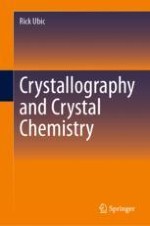2024 | OriginalPaper | Chapter
11. Diffraction and Reciprocal Space
Author : Rick Ubic
Published in: Crystallography and Crystal Chemistry
Publisher: Springer International Publishing
Activate our intelligent search to find suitable subject content or patents.
Select sections of text to find matching patents with Artificial Intelligence. powered by
Select sections of text to find additional relevant content using AI-assisted search. powered by
